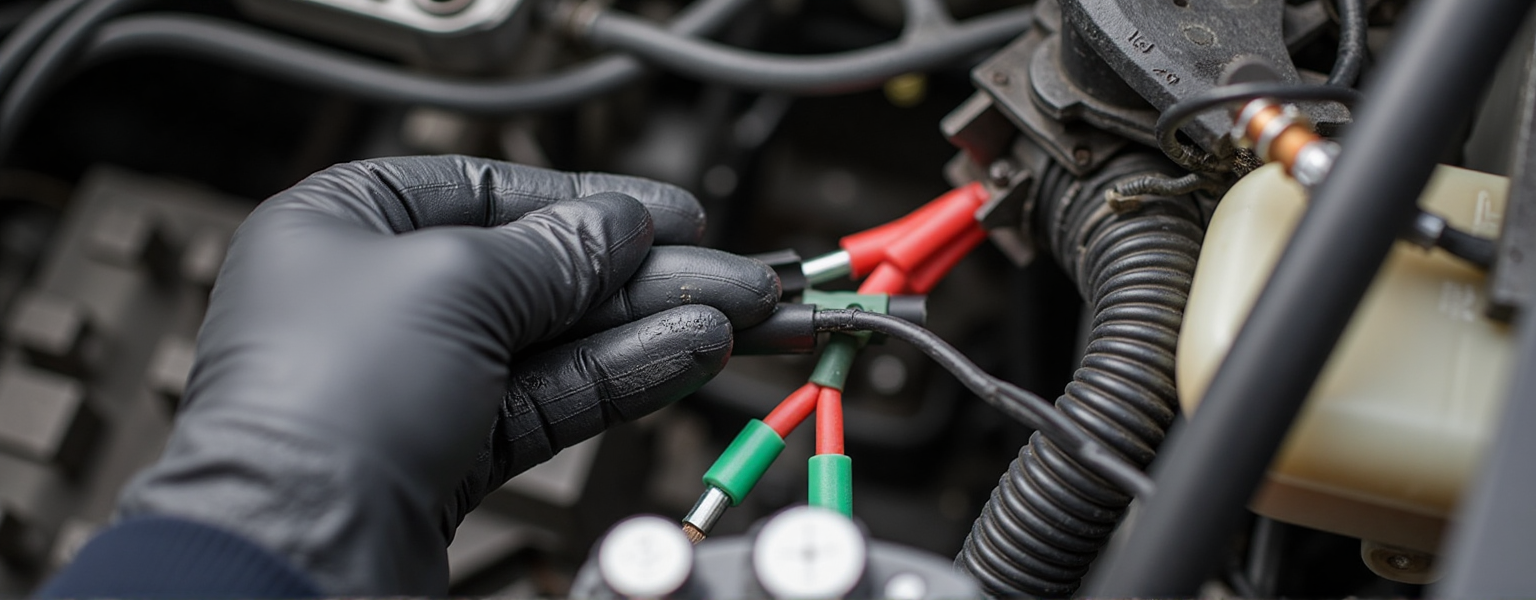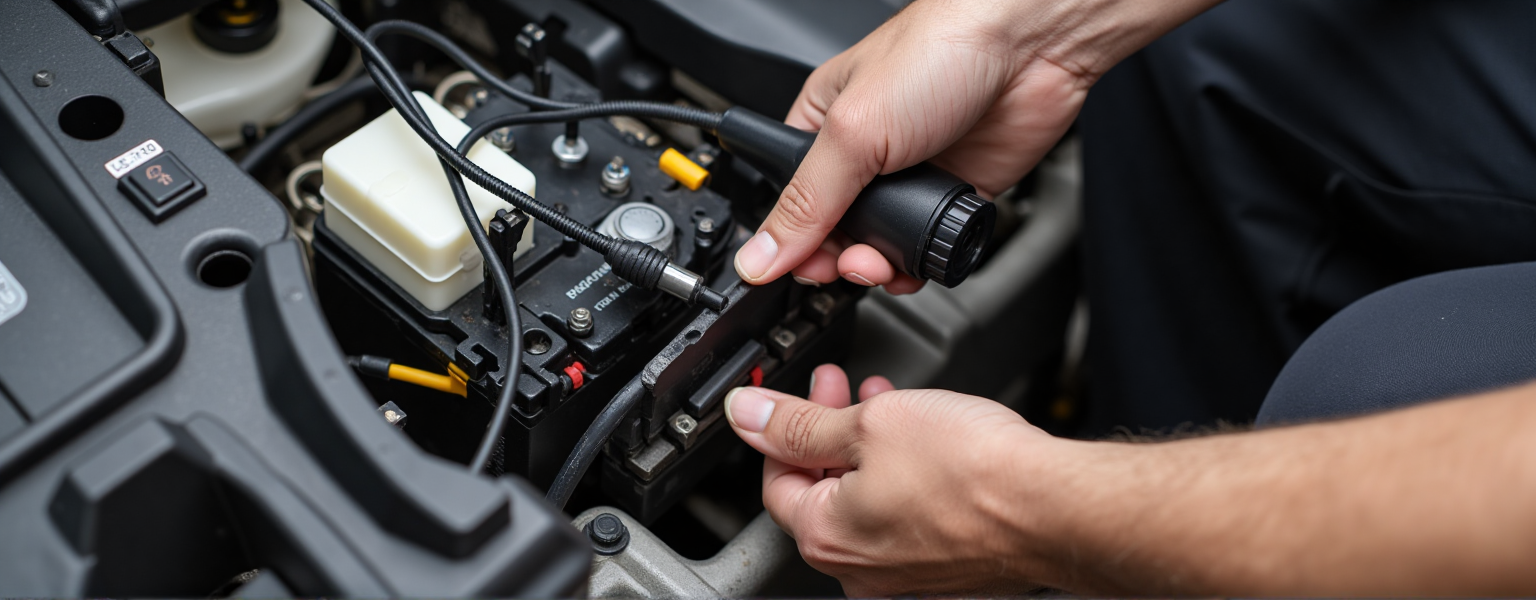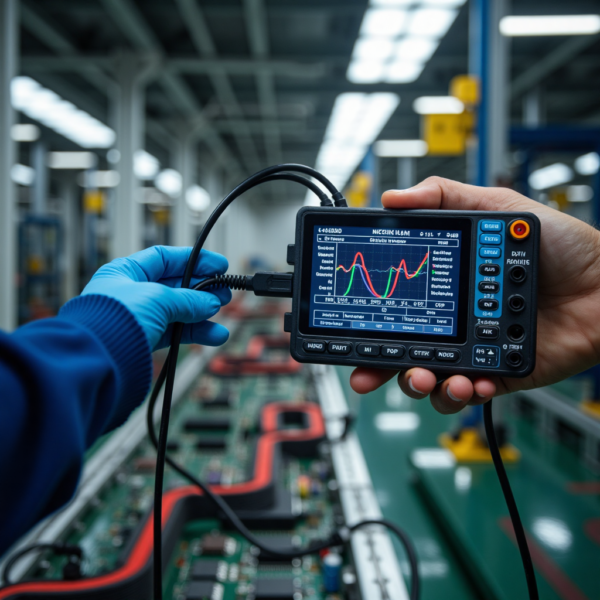Why is Wiring Harness Called the “Nervous System” of Electronic Devices?
Lightning strikes pose a critical threat to the stable operation of traffic signal systems. The immense energy generated can readily invade through power and signal wire harnesses, causing equipment damage and traffic paralysis. For lightning protection design of wire harnesses, a <strong>three-pronged integrated protection system</strong> encompassing <strong>external direct-strike protection, induced lightning surge suppression, low-resistance grounding, and precision construction</strong> must be established. This forms a solid foundation for ensuring the safe and reliable operation of urban traffic signals.

I. Functional Analogy: Similarities with the Nervous System
1.1 Signal Transmission – The “Neural Pathway” of Information
• Function of wiring harness:
▪In electronic devices, wiring harnesses transmit data signals through conductors, enabling communication between components (such as sensors, processors, and actuators).
▪In automobiles, the CAN bus (Controller Area Network) connects the engine control unit (ECU), ABS system, and instrument panel through wiring harnesses to achieve real-time data exchange.

1.2 Power Distribution – The “Lifeline” of Devices
• Power distribution by wiring harness:
▪Wiring harnesses not only transmit signals but also distribute electrical power to ensure stable power supply to various modules of electronic devices.
▪For instance, in computers, power harnesses provide different voltages (such as 12V, 5V, and 3.3V) to CPU, GPU, hard drives, etc., ensuring normal system operation.

1.3 System Coordination – The “Control Center” of Overall Operation
• System integration by wiring harness:
▪In complex electronic devices (like robots, smart home systems), wiring harnesses connect sensors, controllers and actuators to ensure coordinated operation of all modules.
▪For example, industrial robots receive feedback signals from position sensors through wiring harnesses, and the control unit performs calculations to drive motors for precise movements.

Summary
• From a functional perspective, wiring harnesses show remarkable similarities with the nervous system:
▪Signal transmission → analogous to neural electrical signal conduction, ensuring information exchange
▪Power distribution → similar to autonomic nervous regulation of energy, maintaining device operation
▪System coordination → comparable to the integrative capability of central nervous system, ensuring unified functionality
II. Structural Analogy: Complexity and Organization
The structure of wiring harnesses closely resembles that of the human nervous system, featuring hierarchical organization, modularity, and protection mechanisms. This organizational approach ensures efficient transmission of signals and power while enhancing system reliability and maintainability.
2.1 Hierarchical Structure: Coordination Between Trunk and Branches
• Wiring harness hierarchy:
▪Main harnesses (like automotive dashboard main lines or server motherboard power buses) handle core power and data distribution.
▪Branch harnesses (such as door wiring or SATA cables) connect specific functional modules for localized control.
Function: Hierarchical design optimizes routing efficiency, reduces redundancy, and facilitates fault localization.

2.2 Modular Design: Functional Specialization
• Wiring harness modularity:
▪Power harnesses (like 24V industrial equipment power lines) specialize in energy delivery.
▪Signal harnesses (such as HDMI, USB) handle high-speed data transmission.
▪Control harnesses (e.g., PLC control lines) manage inter-device command communication.
Function: Modularity facilitates maintenance and upgrades, allowing replacement of damaged components (like camera wiring) without affecting overall system operation.

2.3 Protection Mechanisms: Interference Resistance and Durability
• Wiring harness protection:
▪Insulating materials (like PVC, silicone) prevent short circuits and leakage.
▪Shielding layers (aluminum foil, copper mesh) resist electromagnetic interference (EMI).
▪Protective sleeves (corrugated tubes, braided mesh) provide mechanical protection (against wear and corrosion).
Function: Protection mechanisms ensure stable signal transmission, extend harness lifespan, and enable operation in harsh environments (e.g., high-temperature automotive engine compartments).
Summary
The structural design of wiring harnesses draws inspiration from the hierarchical, modular, and protective characteristics of the nervous system, enabling them to function efficiently and reliably in complex electronic devices.
This analogy not only reveals the importance of wiring harnesses but also provides biomimetic insights for developing future intelligent harnesses (such as self-healing or flexible circuits).
III. Failure Impact Similarities
The role of wiring harnesses in electronic devices parallels the human nervous system not only in function and structure, but also in failure modes. When wiring harnesses malfunction, the entire device’s operation may be severely affected or even completely paralyzed – remarkably similar to how nervous system damage causes bodily dysfunction.
3.1 Localized Failures May Cause Global Paralysis
• Wiring harness manifestations:
▪A single wire short circuit, break, or poor contact may disable entire modules (e.g., automotive ECU failing to receive sensor signals).
▪Critical harness failures (like motherboard power lines) may prevent entire system startup (e.g., computer blackscreen from damaged power cables).
3.2 Complex Diagnostics Requiring Specialized Tools
• Wiring harness diagnosis:
▪Engineers use multimeters, oscilloscopes or specialized testers to identify breaks, shorts or signal interference.
▪Intermittent failures (from poor contacts causing sporadic operation) significantly increase troubleshooting difficulty.

3.3 Challenging Repairs Often Requiring Complete Replacement
• Wiring harness repair:
▪Broken conductors or degraded insulation typically require full harness replacement (e.g., corroded automotive wiring).
▪High-integration devices (e.g., smartphones) may need complete motherboard replacement if solder joints fail.

3.4 Similar Preventive Approaches: Protection and Redundancy
• Wiring harness protection:
▪Abrasion-resistant, flame-retardant materials (corrugated tubes, silicone sleeves) prevent physical damage.
▪Critical systems (e.g., aerospace) employ redundant harness designs ensuring single failures don’t compromise operation.
Summary
The failure impacts on wiring harnesses show striking parallels to nervous system impairments – localized failures causing systemic issues, complex diagnostics, and difficult repairs.
This analogy reinforces how wiring harnesses serve as electronic devices’ “nervous system” – their damage critically compromises entire system stability and functionality.
Thus, optimizing harness design and protection is paramount for ensuring electronic reliability.
IV. Technological Evolution and Bionics
The development of wiring harness technology is closely related to bionics, with its design inspiration often drawn from the operational mechanisms of biological nervous systems.
As electronic devices become more complex, wiring harnesses continue to evolve to improve transmission efficiency, reliability, and intelligence. The following analysis explores two main directions: bionic inspiration and technological trends.
4.1 Efficient Conduction: Mimicking Optimized Neural Signal Transmission
• Wiring harness evolution:
▪Copper wires → Optical fibers: While traditional copper wires are limited by resistance and EMI, optical fibers (e.g., automotive Ethernet) mimic neural efficiency for low-loss, high-speed transmission.
▪Differential signaling (e.g., CAN bus): Implements “dual-channel” noise immunity similar to neural mechanisms for stable data transfer.

4.2 Adaptive and Intelligent Regulation: Toward “Smart Nerves”
• Future directions for wiring harnesses:
▪Self-healing materials: Developing “neural regeneration”-like conductive materials that automatically restore connections during breaks/shorts (e.g., liquid metals or polymer-based materials).
▪Dynamic current distribution: Smart harnesses adjusting power allocation in real-time (e.g., EVs prioritizing power based on load), mimicking sympathetic nerve regulation of blood flow.
4.3 Lightweight and Integrated Design: Bionic Structural Optimization
• Wiring harness innovations:
▪Flexible Printed Circuits (FPC): Replacing traditional harnesses with neural network-like thin, bendable layouts (e.g., foldable smartphone internals).
▪3D-printed harnesses: Custom topology minimizing redundant wiring, mimicking neural “precision distribution”.
4.4 Interference Resistance and Protection: Bionic “Insulation Sheath”
• Wiring harness improvements:
▪Multi-layer shielding: Aluminum foil + braided layers mimicking myelin’s dual protection.
▪High-temp/corrosion-resistant materials: Silicone, TPU etc. resembling neural membranes for harsh environments (e.g., engine bay harnesses).
4.5 Future Trends: Neural Network-like Intelligent Harness Systems
• Wiring harness vision:
▪Embedded sensors: Pressure/temperature sensors enabling real-time health monitoring (e.g., predictive maintenance for aircraft wiring).
▪AI-driven management: Algorithm-optimized signal paths and energy use approaching “autonomous decision-making” neural behavior.
Summary
The failure impacts on wiring harnesses show striking parallels to nervous system impairments – localized failures causing systemic issues, complex diagnostics, and difficult repairs.
From a bionic perspective, wiring harness evolution consistently emulates the nervous system’s efficiency, adaptability and intelligence. With advancements in materials science and AI, future harnesses may approach “artificial nervous systems” – truly possessing self-healing, self-adapting, and intelligent decision-making capabilities as device cores.
The failure impacts on wiring harnesses show striking parallels to nervous system impairments – localized failures causing systemic issues, complex diagnostics, and difficult repairs.

No comments to show.




Leave a Comment